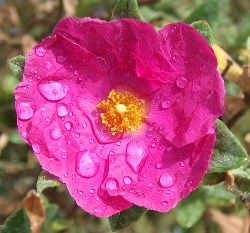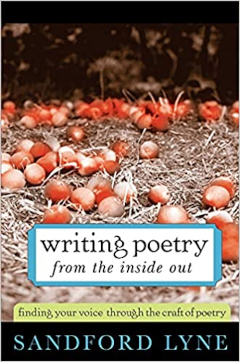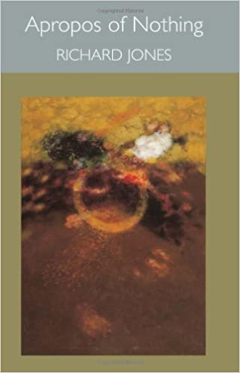
|
Jim Doss is co-editor of Loch Raven Review. He was born and
raised in the foothills of the Blue Ridge
Mountains. He has lived most of his life in the mid-Atlantic region with
the exception of several years in Arizona. His work has appeared in
Poetry East, Words-Myth, Poems Niedergasse, and other publications. A
graduate of the University of Virginia, he earns his living as a
software engineer, and lives with his wife and three children in
Maryland.
Sandford Lyne (1946 - 2007) taught poetry writing to over 50,000 young people in grades 1-12. Since 1986, he presented workshops to thousands of teachers on creative writing in the classroom both through the John F. Kennedy Center for the Performing Arts education programs for teachers and his own Inner Writer Program. His collection of poems by young people, Ten-Second Rainshowers, has been showcased twice on National Public Radio. A follow-up collection, Soft Hay Will Catch You, came out in the spring of 2004. His own poems have appeared in numerous journals, including The American Poetry Review, The Virginia Quarterly Review, Ploughshares, Poetry East, Louisiana Literature, and Louisiana Review, as well as in two chapbook collections, The Invention of Dragons, and The Love of Simple Things. Sandy passed away on February 7, 2007 in Arnaudville, LA. Richard Jones was born in London, reared in Virginia, and is currently Professor of English at DePaul University in Chicago. He is the author of five previous volumes of poetry, most recently The Blessing: New and Selected Poems. He has edited the literary magazine Poetry East for over twenty-five years. |
Summer 2007 Table of Contents - Vol. III, No. 2 |
|
|
Sandford Lyne,
Writing Poetry: from the inside out,
Sourcebooks, Inc., ISBN 978-1402208447, 256 pages, 2007, $14.95. Before I begin this review I have a confession to make. Sandy Lyne was my first creative writing teacher in college, and holds a special place in my heart. I lost touch with him after college only to contact him several years ago and benefit again from his wisdom and guidance. Sandy was a natural born teacher and found his true calling outside of the precocious universities helping elementary school and high school students discover the poet buried inside them. He also occasionally taught adult workshops with the same goal in mind. Writing Poetry: from the inside out is both superbly written and beautifully designed book by the publisher. On the surface it is a how-to guide for beginning and intermediate poets based upon the experience gathered in 30 years of teaching, but interwoven between the practical instruction is the story of Sandy's own spiritual journey through poetry, and numerous examples from his own writing as well as some of his favorite poets such as Walt Whitman, William Blake, Ralph Waldo Emerson, Emily Dickenson, Mary Oliver, Naomi Shihab Nye, Ted Kooser, Richard Jones and many poems from the students he taught in the public schools. These personal stories and examples give this book a depth and authenticity that is often missing from similar books, and demonstrate the author's genuine love of his craft and teaching. Sandy describes his original vision for teaching poetry writing as follows: In 1981, in an exercise in a personal growth seminar, listening to music with my eyes closed, I had a dreamlike vision of an Inner Master. I saw him approaching me, dressed in embroidered robes, his head shaved. When he stopped in front of me, I instinctively cupped and lifted my hands. From his own cupped hands, he began to pour a stream of diamonds into mine, thousands and thousands of diamonds quickly spilling over to the floor, forming an expanding lake of diamonds at my feet. There was a telepathic communication going on between us. I understood that these diamonds represented poems that would come through me into the world. I looked at him in a way that communicated to him-- with some distress-- "I can't write all of these poems." He just smiled at me and kept pouring. Minutes went by, but when he finally finished his task, we bowed to each other and he departed. This vision sets the tone for the book, lets the reader know the author is passionate about his life's work, and that this book is an extension of himself and his teaching techniques to a wider audience than can be reached through classrooms and seminars. It is a mission statement that defines the author as poetic enabler. One of the things I like about the book is that Sandy
thinks of poetry writing in terms of a sketch artist or painter.
The starting point of this journey is to select a journal, a portable
artistic studio, that the budding poet feels comfortable with and can
carry with them throughout their daily lives. But this is a very
individual selection, and there is no one size fits all solution.
Sandy uses the childhood game of pick-up sticks to illustrate the point
that each individual is unique in terms of heritage, culture, life
experiences and temperament, and that this is the stuff that poems are
made from. He also outlines the technique of poem sketching and
fishing for poems using word groups. One example he provides uses
the word group: samurai village marigolds rain. 1. This is certainly an increasing popular way to stimulate associative thinking and push the creative juices where they might not ordinarily go on their own. Other techniques and topics are discussed in the book, but I'm not going to give away everything in this review. The appendix includes many exercises to help the poet developer their skills. Two phrases are repeated a number of times in the book: "Poems are the fingerprints of the soul," and a quote from Jacob Böhme "Whatever the self describes, describes the self." Instinctually these truths are known to most people, but never contemplated at length, never dwelled on. But it's an important thing to keep in mind. Every work of art that is produced is a self-portrait of the artist no matter the ostensible subject matter. What is written, drawn, etc. reveals a wealth of information about the inner spirit of the artist. One of my favorite and most revealing of Sandy's example poems is: Whatever path you're on Much of the charm of this book comes from the casual and inviting way the book is written. It is filled with personal stories and insights along with practical instruction and advice. The author's friendly, open manner makes the book seem more like a dialogue than a narrative, and you'll find yourself wanting to converse with the author and share stories and insights. And that is what this book is all about: an invitation to the reader to open themselves up, try new things, discover the hidden poet who lies within, to free that poet from the artificial chains we allow to be placed on him or her, and begin a journey of self-discover and self-actualization. Sandy has given the world a wonderful gift. I encourage anyone interested in the creative process to go out and buy a copy.
Richard Jones,
Apropos of Nothing,
Copper Canyon Press, ISBN 978-1556592379 , 63 pages, 2006, $15.00. In his sixth book of poems, Richard Jones ostensibly chooses nothing as his subject. But as the back cover quote from Rilke says: "True singing is a different breath, / about nothing." An existential richness and quiet angst inhabits these poems as Jones travels through his day-to-day suburban life filled with whimsical imaginings and philosophical observations. Jones has mastered the ability to write clearly and simply about complex topics. like Li Po or Kenneth Rexroth before him. A deep, emotional undercurrent swirls beneath the relatively calm surface of his poems. I've read criticisms that imply Jones' poems are shallow because they are written without a lot of poetic pretensions and are easy to understand. But when I read a poem like: The First Nobel Truth I can't help but be awed by its beauty and Jones' effortless ability to transform an unpleasant situation into a metaphysical speculation. The very ease with which he can pull this off hides the difficulty of writing such verse. Another example of this effortless quality in the pursuit of wisdom is: Help Jones is a poet of the heart, and it is hard not to be touched by this portrait of an aging father through the loving eyes of his son. Not every poem in this volume rises up to the standards of the two that I've quoted in this review, but Jones has written another memorable book about the nothings that fill our lives. Copper Canyon is one of the best poetry publishing houses in the country and they seek to publish poets who offer their readers both wisdom and beauty in a single package. This book is not for people who savor complicated poetry filled with poetic devices. But for those who want to be touched by beauty and truth, this book will make a welcome addition to their bookshelf.
© Jim Doss |
|

